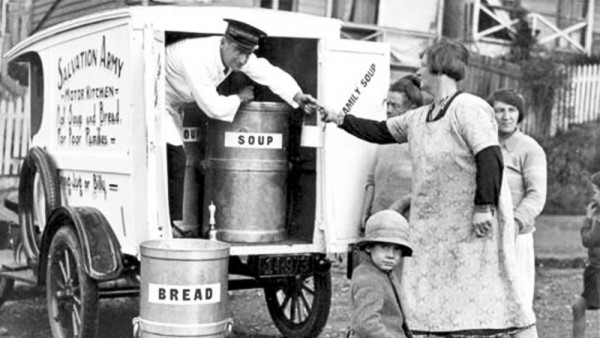Covid: From recession to recovery
1 April 2021

Across New Zealand, in every industry, there are lessons to be learnt from Covid. Most importantly, as industry and as a country, we need to learn these lessons before spring this year.
The 2020 blueprint has, in the first few months of 2021, seen some if not many industries struggle to work. The plan for the rest of 2021 needs to change, to save many of our businesses from going out of business and the economy turning into a long-lasting recession.
Possibly the most significant recession in recent times was the Great Depression of the 1930s. It started with New Zealand’s economy being in a fragile condition as a result of weak performance throughout the 1920s. New Zealand did not recover economically from the impact of 1918-19 influenza pandemic and the First World War. Bankruptcies doubled in 1921 and doubled again in 1922. Then came the Great Depression and the Government’s response was to reduce spending to match income. However, by 1935, New Zealand was climbing its way out of the Great Depression through a farming led recovery.
Fast forward to today and the main difference is a change in economic policy: instead of the Government reducing expenditure to match income, it is supporting some parts of the economy by printing money and giving it to those businesses. Neither approach is sustainable and I think the same result is likely. Whether money is printed or money is only spent when supported by income, there needs to be a recovery. The truth of all recoveries is that although Governments enable recoveries by the policies they enact, it is the actual businesses who lead the recovery. So, the question before New Zealand is: what can the Government do to enable a speedy recovery? Or in other words, what can the Government do to enable businesses to recover?
IMF perspective
The other striking similarity with the Great Depression is the worsening state of our economy. The International Monetary Fund (IMF) has reported that New Zealand has run the largest discretionary fiscal response of any of the advanced economies in the world, at around 20% of Gross Domestic Product (GDP). Furthermore, the wage subsidies have driven up house prices and prevented the movement of New Zealanders into jobs that are now not being done across many of New Zealand’s industries.
These two very perverse outcomes are undermining New Zealand’s ability to pull out of recession. The possible collapse of the housing market fueled by the Government’s recently announced rental and housing policy will only serve to worsen our economic situation and put many New Zealanders into very difficult circumstances with their finances. We risk being left behind as our trading partners and our trading competitors move on with comprehensive vaccination programmes.
That said, it seems sensible to start working from the positives. What we did learn in 2020 is that we can manage a pandemic, but what we haven’t done is apply those lessons in 2021. Taking on examples of success from around the world and our own successes, we are now able to design a border system that will enable economic recovery. Our border lockdown has been our major line of defence. We have now the ability to free up the border lockdown and reduce risk. We can do that by adopting new testing regimes (including salvia tests), bespoke isolation facilities and quarantine periods that do not involve locking people up in hotels, all supported by a comprehensive vaccine programme.
Business leaders’ call
This has been the call from many business leaders: build on what we know we can do well and convert that into economic recovery. The Government has quickly picked up on this and appointed a business group to provide independent advice on the management and direction of its Covid response. This group needs to avoid the often-repeated temptation to look past our agriculture exports and instead, conjure up some sort of technology-led recovery.
New Zealand does not have the infrastructure to achieve a technology-led recovery in the next few years, which has any chance of returning the current $37 billion in offshore earnings from the primary sector.
It is a case of picking the winners and enabling them. As with the Great Depression, this will be a farmer-led recovery. Tourism will take many years to return to its peak. As a country, we need to look to value creation and the question becomes, what does New Zealand agriculture and horticulture need to recover?
We are a trading nation, so critical to our economic survival is enhancing trade with priority trading partners. To make trade work, we need to be able to meet with our customers overseas, we need sea and air freight operating efficiently, and we need trade barriers removed or reduced to free up the movement of our goods. But there is another key aspect to enabling recovery, even for our fledging technology sector, and that is access to offshore labour. This is where New Zealand’s natural innovation should take the lead and produce a border control system, backed by technology, that permits movement of traders and workers.
Our economic recovery will not start until we have a very different but nonetheless safe border regime in place, backed by vaccination, technology and appropriate quarantine. A 2021 border regime that allows the movement of the people that enable New Zealand to be a trading nation. History does repeat and we need to learn the lessons of the Great Depression.
Let’s move out of the paradigm of 2020 and embrace a new and vibrant future that will lead to our economic recovery. If we don’t, our trading competitors will pass us by, take over our premium markets and New Zealand will not economically recover.
Mike Chapman
Chief Executive
